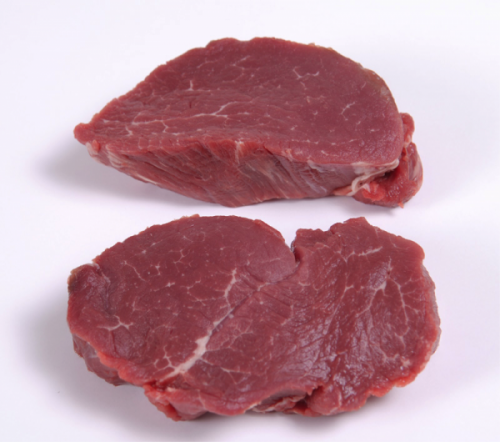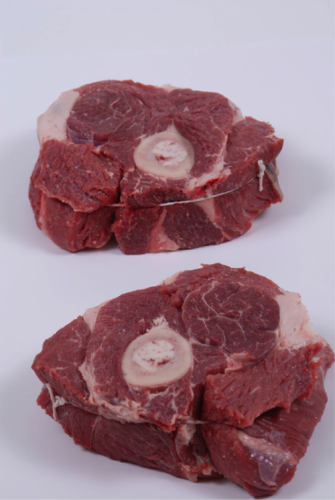5 Meat Fibres and Tenderness Factors
Under cross-sectional inspection, muscles from different parts of the animal’s body display bundles of fibres that appear as irregularly shaped polygons. The bundle size and thickness of the connective tissue septa determine the texture of the muscles: those with small bundles and thin septa have a fine texture, and those muscles with larger bundles and more connective tissue with thick septa have a coarser texture.
The finer the texture the more precision of movement from the muscle, such as tenderloin (Figure 7). The coarse-textured muscles, such as shanks and shoulders (Figure 8), are the heavy working muscles of the body that support the full weight of the animal and therefore require less precision of movement.


Science can help explain why some muscles on a beef animal are more tender than others. There are actually three types of skeletal muscle, known as twitch fibres, with differing speeds of movement and with different colours:
- Fast glycolytic (white): These are fast twitch fibres; they are found in skeletal muscle, such as shanks, shoulders, and hips, and are known as “voluntary muscles.” They require no oxygen and they move faster.
- Fast oxidative (red): These are slow twitch fibres; they are found in the diaphragm, heart, arteries, and veins, and are known as “involuntary muscles.” They require oxygen to operate and they move slowly.
- Slow oxidative (red/white intermediate): These are slow/fast twitch fibres; they are found in precision muscles, such as the tenderloin and strip loin, that don’t need to move as fast as skeletal muscles.

